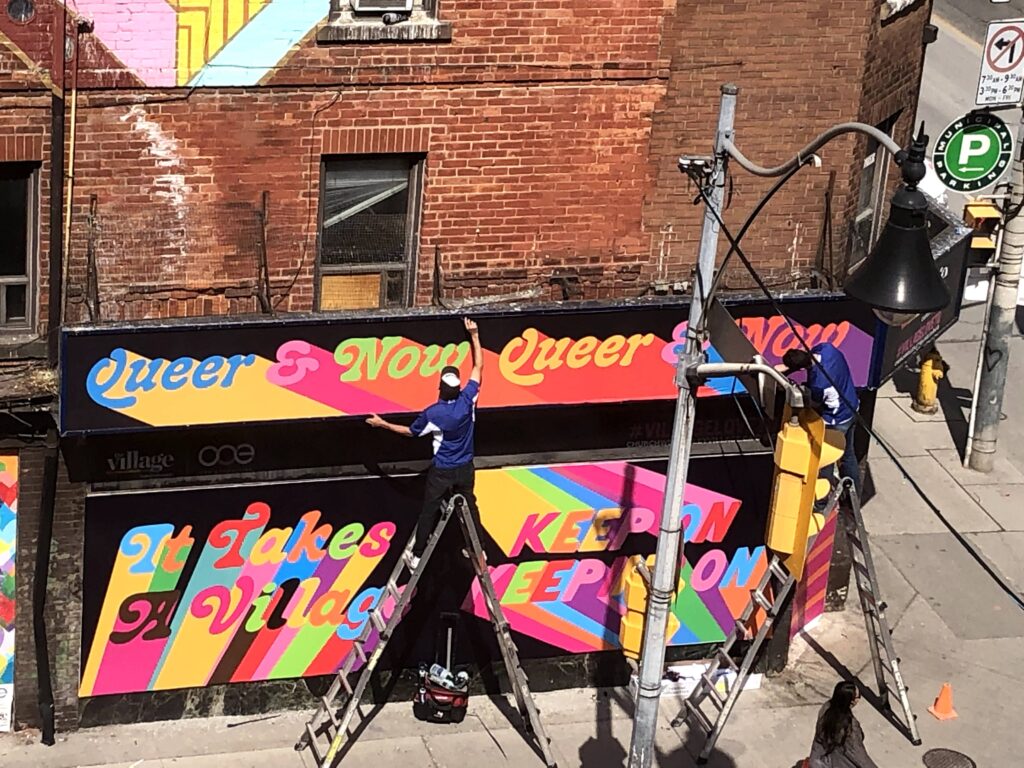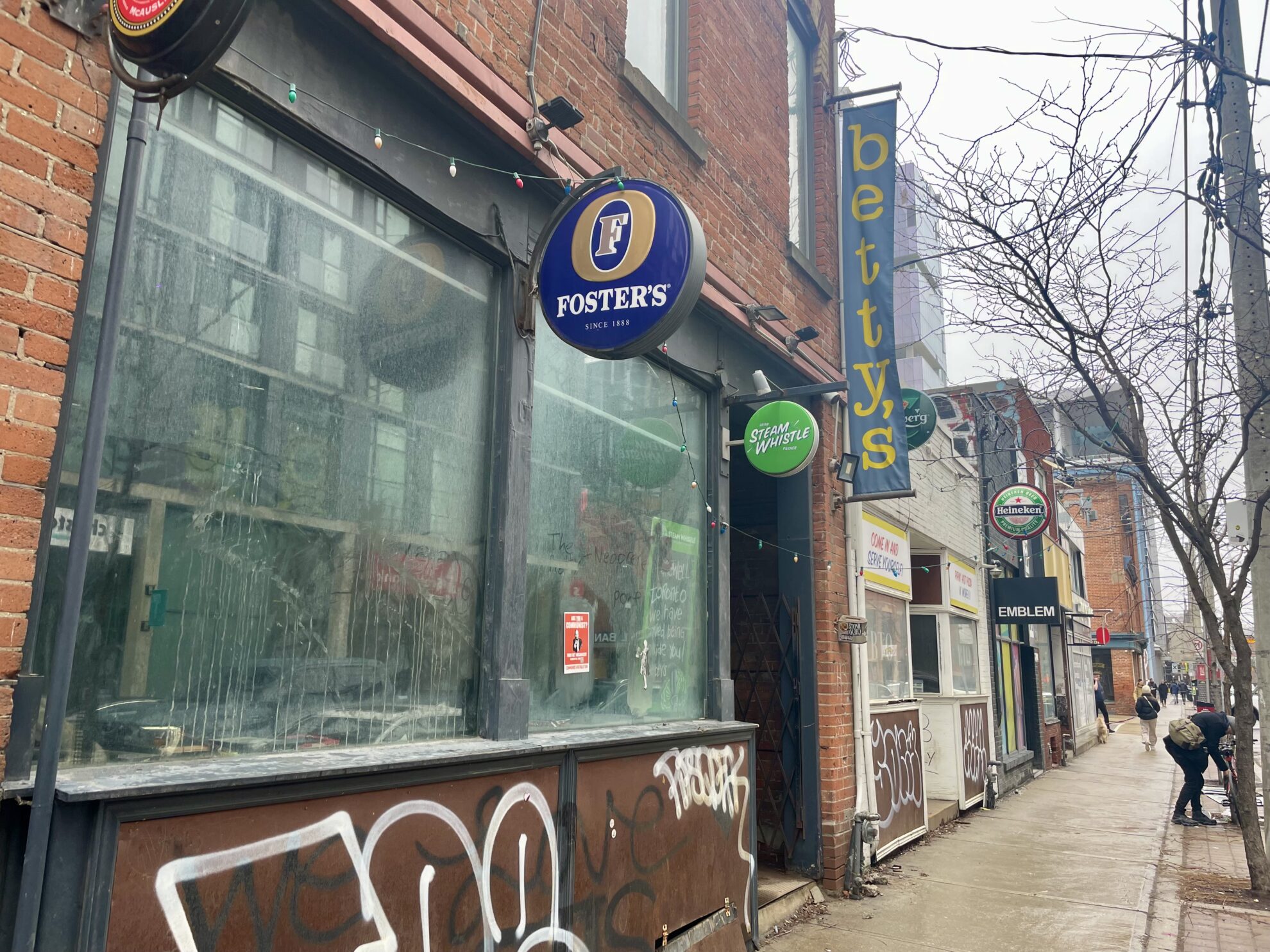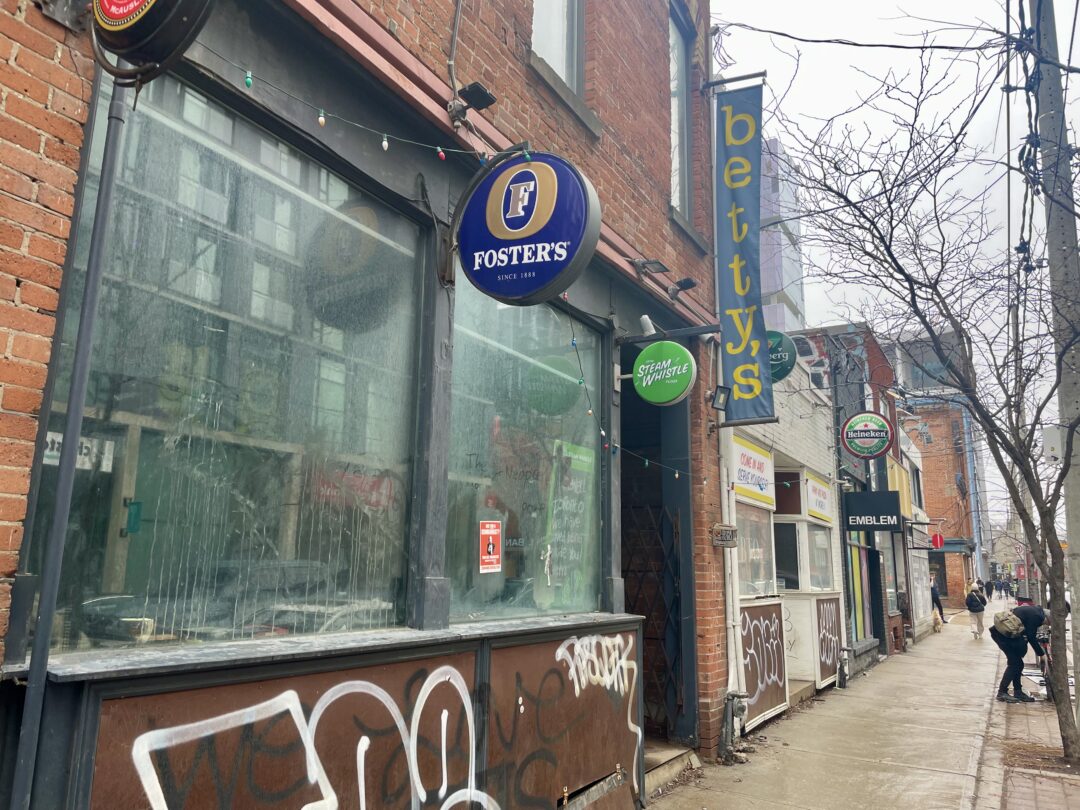Andre Bermon, Publisher/Editor –
Betty’s bar at 240 King Street East was a staple of the Downtown East – until it wasn’t. After nearly three decades, the last drink-filled hurrah occurred on a snowy Christmas eve in 2022.
It wasn’t long before adjacent businesses on the same block west of Princess Street disappeared as well. The row of mostly 19th-century commercial buildings, once part of King East’s retail corridor, have now been empty for a year. Their new owner, Emblem Developments, made businesses move out as part of its plan to build a high-rise mixed-use development.
At condominium projects across the city, developers often decide not to retain their commercial tenants inherited through land acquisition. If buildings are to be torn down or altered, construction can begin only with vacant possession.
Therefore, once a lease on a prospective site matures, few businesses get the chance to renew. Since development approvals and investor financing can take years, communities are left holding the bag of dilapidated buildings.
This phenomenon has a rippling affect on business and neighbourhoods, says King Street East merchant Don Lake.
“From the standpoint of the neighbourhood, the experience has been very negative. People comment on it. They do in every city when they see a lot of vacancies – they assume it’s because businesses are failing.”
But in the case of the block Betty’s bar was on, vacancies are entirely developer driven, says Lake.
Toronto City Planning designates King Street from Yonge to St. Lawrence Street in Corktown as a priority retail street. Part of the city’s Downtown Plan, King Street East has its own by-laws to ensure that some ground-floor retail space is preserved when sites are developed. The intent is to help protect the street’s character while contributing to employment and neighbourhood activity.
(Emblem Developments has agreed to replace 537 square metres of ground-floor retail space, less than the site previously had.)
But the city cannot prevent landowners – especially developers who own entire blocks – from keeping their commercial frontages empty.
Ward 13 community planner Alex Teixeira told the bridge that the planning process has much more to do with land use than with what private owners do with commercial or residential tenancies. While City Council has imposed a vacant home tax, nothing of the sort applies when storefronts on major streets are left vacant.
“Once the zoning comes into force, [developers] are free to proceed on their development plan on their own time,” said Teixeira. “Sometimes we see them start right away, towards the end of our site plan process. And sometimes they get approvals, and they don’t do anything for years.”
The recent slowdown in the condo market is contributing to construction delays in Toronto and the wider GTA. Despite zoning approval last March for a 43-storey building, Emblem is still soliciting pre-sale investors for the project (monikered as Allure on the developer’s website). Usually, a developer tries to sell at least 70 per cent of building units to finance construction.
Toronto’s real estate market downturn is expected to continue through 2024, as interest rates and construction costs remain high. With no mandated timeline from the city, the Betty’s block could remain empty for an indefinite period.
However, not all communities remain idle in the face of neglected storefronts.
Concerns over safety and business vitality prompted the Church and Wellesley Village Business Improvement Area to work with developer One Properties, beginning in 2018, to animate an intersection that had gone vacant pending a development proposal.
One effort the BIA organized was to interview local entrepreneurs for a pop-up space in one of the empty buildings. Dead Dog Records, a music store, was ultimately chosen with an initial lease of only three months. Five years later, as construction as yet to take place, the business is still there. (Six businesses are currently operating in the buildings owned by One Properties.)
Stephanie McCracken, former executive director of the Church and Wellesley Village BIA, told the bridge that partnerships with 51 Division and neighbouring non-profits gave confidence to the developer to work with the community. During the pandemic, art murals were installed on the former Rexall building, which wraps around the northwest corner of Church and Wellesley. The project was so successful that the BIA won marketing awards from both the Toronto and Ontario business improvement associations.
“We made something that was really taking away from the village into a feature of the village,” McCracken said. “We did 16 different murals that would help people feel safe and welcomed in the neighbourhood. One showed mental health resources, another one sexual assault resources and different signs of togetherness to bring out the vibrancy of the area.”

An art mural by Tim Singleton was installed on the old Rexall building at the Church-Wellesley intersection. Photo: SM
“It was such a great partnership with One Properties for them to say yes and to keep saying yes.”
Back on King Street East, no such partnership exists between the St. Lawrence Market BIA and Emblem Developments. (St Lawrence Market BIA could not be reached for comment.)
“[Developers] have a duty to the neighbourhood to keep those businesses and buildings active and useful,” stated Lake. “It’s quite criminalizing that they’re not even being used”.





1 Comment
What Emblem has done to King East borders on the criminal.
It no longer feels safe to walk in the area after dark.